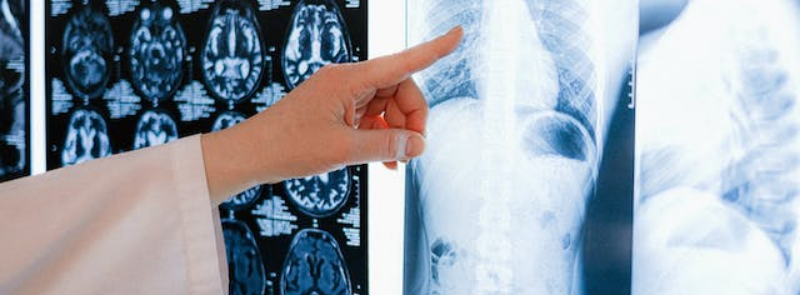
When It Occurs
Every January 11th
Official Website
Timeline
Days Passed (1083)
# Hashtags
#PagetsAwarenessDay #PagetsDiseaseOfBone
On January 11, Paget’s Awareness Day focuses on enlightening others about the impact of this bone disease. Similar to blood, skin, and organs, bones undergo constant repair and renewal throughout human life. Paget’s Disease disrupts this process, leading to the gradual deformation or fracture of bones over time. The spine, skull, pelvis, and femur are among the most commonly affected areas by Paget’s.
What is Paget's Disease of Bone?
Paget's Disease of Bone is a condition that disrupts the normal process of bone renewal. It typically leads to bones becoming abnormally large, weak, and deformed due to excessive breakdown and formation of bone tissue. This irregular bone turnover results in bones that are structurally weaker, making them more susceptible to fractures, arthritis, and chronic pain.
While the exact cause of Paget’s disease remains unknown, it is believed to involve a combination of genetic factors and environmental triggers. The disease is most common in older adults, especially those over the age of 50, and tends to affect specific bones, such as the pelvis, spine, skull, and long bones of the legs.
Key Symptoms of Paget’s Disease of Bone:
- Bone Pain: The most common symptom, often felt in the hips, spine, or legs.
- Deformed Bones: Enlarged or misshapen bones, such as bowing of the legs or thickening of the skull.
- Fractures: Weak bones that fracture more easily than normal.
- Joint Pain: Often related to osteoarthritis, which can develop in joints near affected bones.
- Hearing Loss: If the bones of the skull are affected, it may lead to hearing issues due to nerve compression.
Paget’s Awareness Day Goals:
-
Awareness and Education: One of the primary objectives of Paget’s Awareness Day is to increase knowledge about the disease. Many people with Paget’s may not know they have it, as symptoms can be subtle or mistaken for other conditions like arthritis. By raising awareness, the goal is to encourage early diagnosis, which is key to effective treatment and prevention of complications.
-
Early Diagnosis: Since Paget’s disease progresses slowly, early detection can help manage symptoms and prevent severe outcomes such as fractures or bone deformities. Paget’s Awareness Day emphasizes the importance of recognizing early signs and seeking medical advice if persistent bone pain or unusual symptoms occur.
-
Research and Support: The day also highlights ongoing research efforts aimed at understanding the causes of Paget’s disease and improving treatments. Funds raised during awareness campaigns often support research projects, with the ultimate goal of finding better management strategies or a cure.
-
Patient Support and Advocacy: Through patient stories and community outreach, Paget’s Awareness Day provides support for individuals living with the disease. It fosters a sense of community among patients, encouraging them to share their experiences and access support services.
Events and Activities:
The Paget’s Association, the UK’s leading charity for individuals affected by Paget’s disease, organizes several events around Paget’s Awareness Day, including:
- Webinars and Educational Seminars: These often feature experts in the field who discuss advancements in research, treatment options, and tips for managing the disease.
- Fundraising Campaigns: Fundraising activities such as sponsored walks, charity events, and online campaigns are often organized to support research and patient services.
- Social Media Campaigns: The Paget’s Association uses social media to share facts about the disease, patient stories, and research updates. They encourage supporters to wear orange, the awareness color for Paget’s disease, and use hashtags like #PagetsAwarenessDay.
- Patient Support Initiatives: The Association offers resources such as information packs, helplines, and connections to specialists who can assist with diagnosis and treatment.
Diagnosis and Treatment:
-
Diagnosis: Paget's disease is usually diagnosed through a combination of blood tests (looking for elevated levels of alkaline phosphatase, a marker for bone activity) and imaging studies, including X-rays or bone scans, which reveal bone changes typical of the disease.
-
Treatment: While there is no cure for Paget’s disease, treatments aim to control symptoms and prevent complications. These include:
- Bisphosphonates: Medications that help regulate bone remodeling.
- Pain Management: Over-the-counter pain relievers like ibuprofen or prescription medications may be used.
- Surgery: In severe cases, surgical intervention may be required to correct deformities or repair fractures.
- Physical Therapy: To help manage pain, improve mobility, and strengthen muscles around affected bones.
History and Importance of Paget’s Awareness Day:
Paget’s Awareness Day is celebrated on January 11th in honor of Sir James Paget, the English surgeon and pathologist who first identified the disease in the mid-19th century. Sir James Paget was a pioneering figure in medical research, and his contributions to the understanding of bone diseases laid the groundwork for modern treatments.
The Role of the Paget’s Association:
The Paget’s Association plays a vital role in organizing Paget’s Awareness Day and providing year-round support to individuals with Paget’s disease. Established in 1973, it works to:
- Promote awareness and early diagnosis.
- Fund and promote research into Paget's disease.
- Offer support and information to patients, families, and caregivers.
- Advocate for better access to care and treatment for individuals with Paget’s disease.
The Association also collaborates with healthcare professionals to ensure that accurate, up-to-date information is available to those affected by the disease and their healthcare providers.
Conclusion:
Paget’s Awareness Day is an essential part of the broader effort to improve the lives of those affected by Paget’s Disease of Bone. By raising awareness, supporting research, and offering resources to patients, the day helps to ensure that Paget’s disease is better understood, diagnosed early, and managed effectively. Through the efforts of organizations like the Paget’s Association, people with Paget’s disease can access the information and care they need to lead fulfilling lives.


